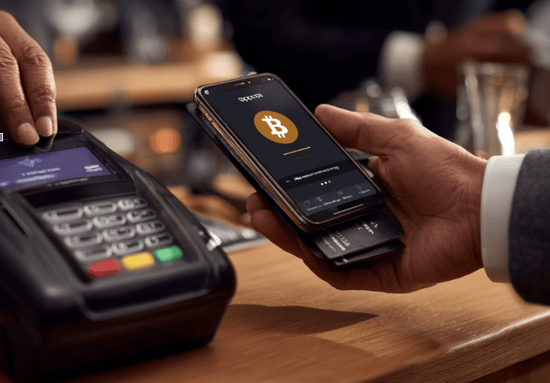
Today's start-ups are unique in their position for shaping industries. They are not only the creators of their products and services, but also building infrastructure that underpins new ways of connecting with people or consuming goods. When it comes to Web3, one of the strongest fulcrums for this is blockchain-supported microtransactions.
Still, taking full advantage of this doesn’t just mean adding a crypto payment option to your app and calling it a day. To get the full benefit, you have to ensure that the payment system is robust, user-friendly, and can scale if your customer base increases.
Learning from Token-Based Systems
To take a real-world example of how microtransactions operate, consider online casinos. These platforms process many thousands of transactions every minute. Most often, they offer tokenized spins or draws to make playing more convenient for their users.
Crypto slot machines - a core part of many of these sites - show how wallet integration can work when it is done right. With such systems, there’s none of the friction or frustrations inherent in traditional payment methods. Crypto makes it easy for users to maintain complete control over their funds while playing, without having to worry about third parties suddenly requiring additional checks on a random process.
That’s the kind of seamless UX that developers ought to aim for when designing models of small payments.
One of the most notable things about token-based online casino platforms is that the crypto slots they offer depend heavily on maintaining a player’s trust and guaranteeing the speediness of transactions. Everything is fast-paced in this setting, and users expect withdrawals and deposits to match that feeling. The decentralized logic behind each spin or pull creates a self-contained layer of trust.
If you’re new to blockchain, this beginner's guide lays the foundation. It’s a detailed look at how blockchain provides an open, decentralized, traceable system of records for users—it’s simple enough for a layman to understand, yet covers some detailed aspects.
The Microtransaction Shift

Traditional payment methods often break down, particularly in the case of very small, high-frequency payments. Fees stack up, and the processing speed is slow. Trust among users may be damaged as a result. Using blockchain eliminates these problems.
With token-based microtransactions, it is possible to move fractions of a coin instantly and transparently. No middlemen are require,d and the fees are massively reduced.
This is something that crypto casinos have unquestionably been utilizing in recent years - and plenty of other businesses, such as those in different areas of gaming, and those in digital goods and Web3 decentralized apps, can learn from their approaches.
They have opportunities to create entirely new models of monetization. But there is a hitch: the implementation is what counts. Founders must also consider the user experience, not just novelty.
Building for Trust and Usability
When integrating microtransactions into your product, wallet UX should be at the top of your concerns. Your users should not have to figure out things as complex as private keys, seed phrases, and gas fees just to give a tip to someone or unlock a feature.
Remove the complexity from your systems. Provide layered security. Let people connect their wallets once, and design systems that feel as fast and intuitive as Apple Pay.
Another UX lesson from crypto games: visual feedback. It's very important at every step, no matter which way things might be going. When a user clicks a button, it should provide an instant acknowledgement, often both audibly and visually. This ensures the user knows exactly what’s going on and feels confident in the process.
Architecture Considerations

In order to function effectively at scale, microtransactions demand more than simply plugging in a blockchain. You’ll need to consider a few questions: which chain (Layer 1 or Layer 2), how to manage latency, and also whether your app can safely cache state changes while waiting for confirmations. You’ll also want to plan user cost management.
Although transaction fees are lower in many blockchain environments, bad design can still cause user friction.
The Benefits of Blockchain-Based Microtransactions
Crypto slots didn't invent microtransactions, but they have built an environment around them and made them a far more feasible payment model. In a product that relies on high-volume, low-value interactions, studying the ways in which these platforms handle trust, user interfaces, and monetary flow can be invaluable for your own project.
The upshot of this study of the rules? Don't just make things for the blockchain – make them so people will use them. Here’s a quick breakdown for founders evaluating blockchain microtransaction readiness:
|
Factor
|
Considerations
|
|
Transaction Speed
|
Fast, low latency, scalable throughput
|
|
Wallet Integration
|
One-click connect, mobile support, intuitive design
|
|
Onboarding Experience
|
Frictionless setup, guest mode, social login options
|
|
Visual Feedback
|
Real-time animations, confirmation sounds, responsive UI
|
|
Trust Mechanisms
|
On-chain logic, transparent payouts, provable fairness
|
|
Fee Optimization
|
Low gas fees, Layer 2 chains, batch transactions
|
|
Token Utility Design
|
Clear use cases, in-app value, user incentives
|
|
Cross-Platform Access
|
Consistent UX, responsive layout, device compatibility
|
|
Support & Fallbacks
|
Help prompts, retry logic, off-chain alternatives
|